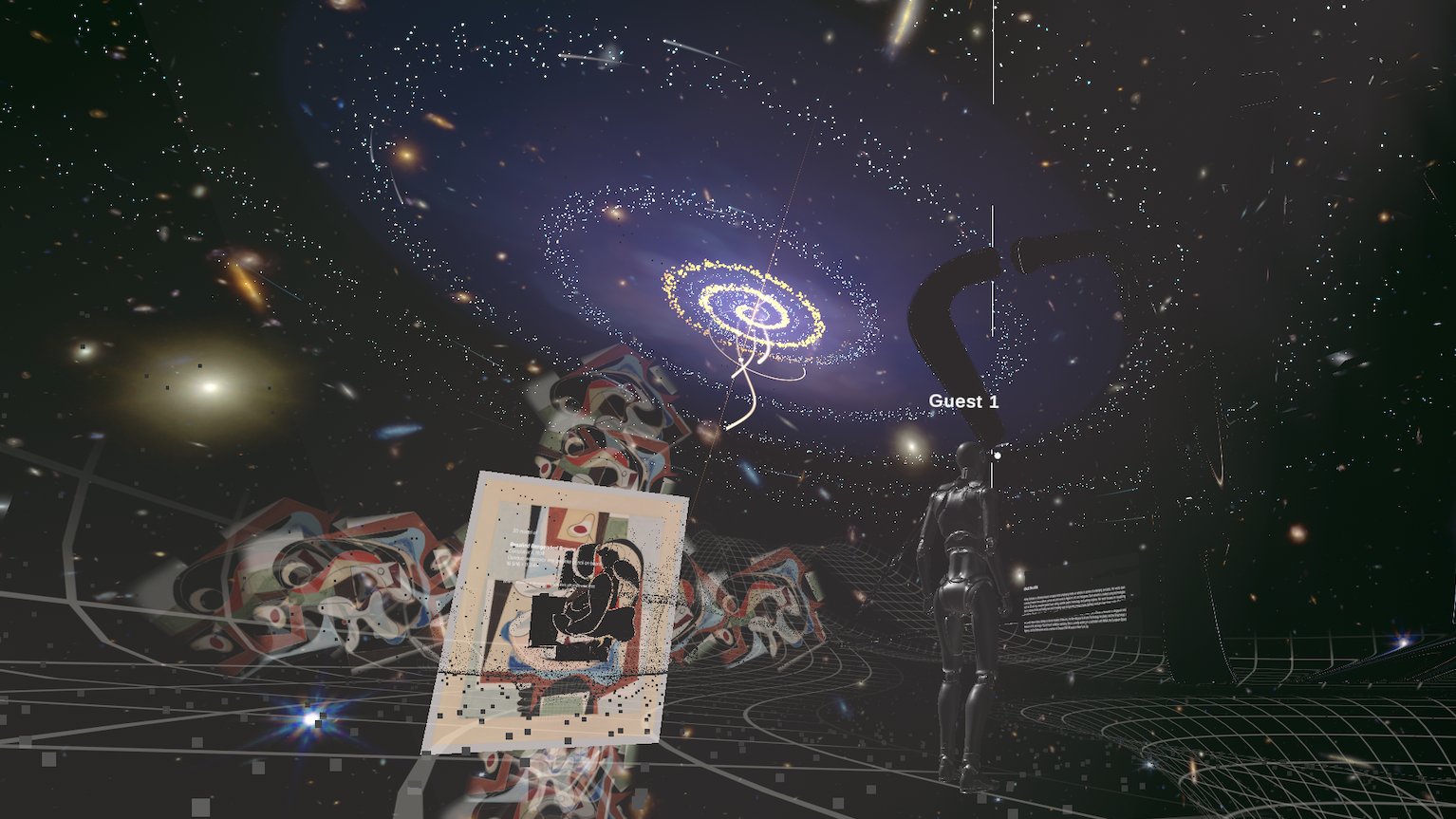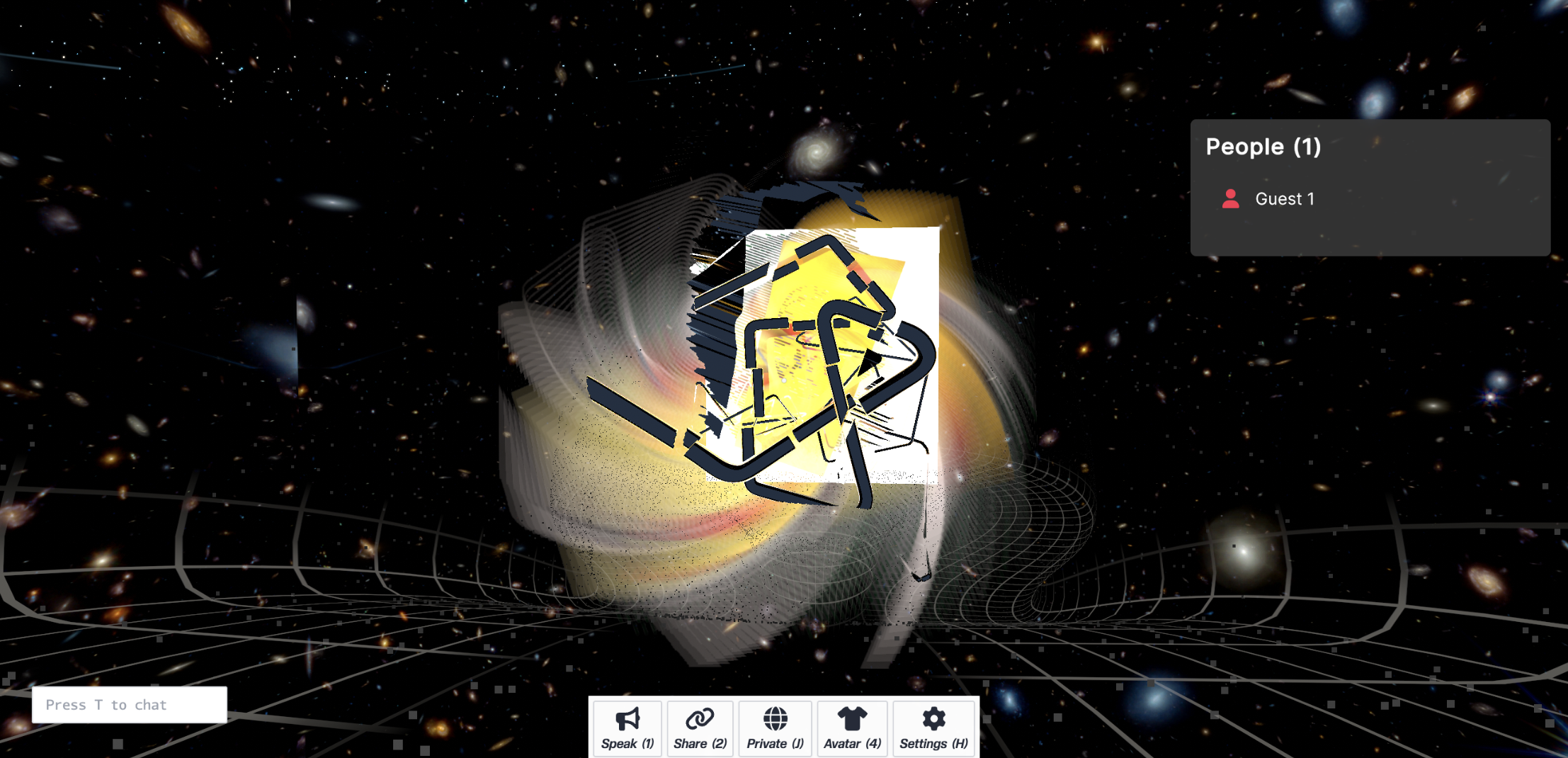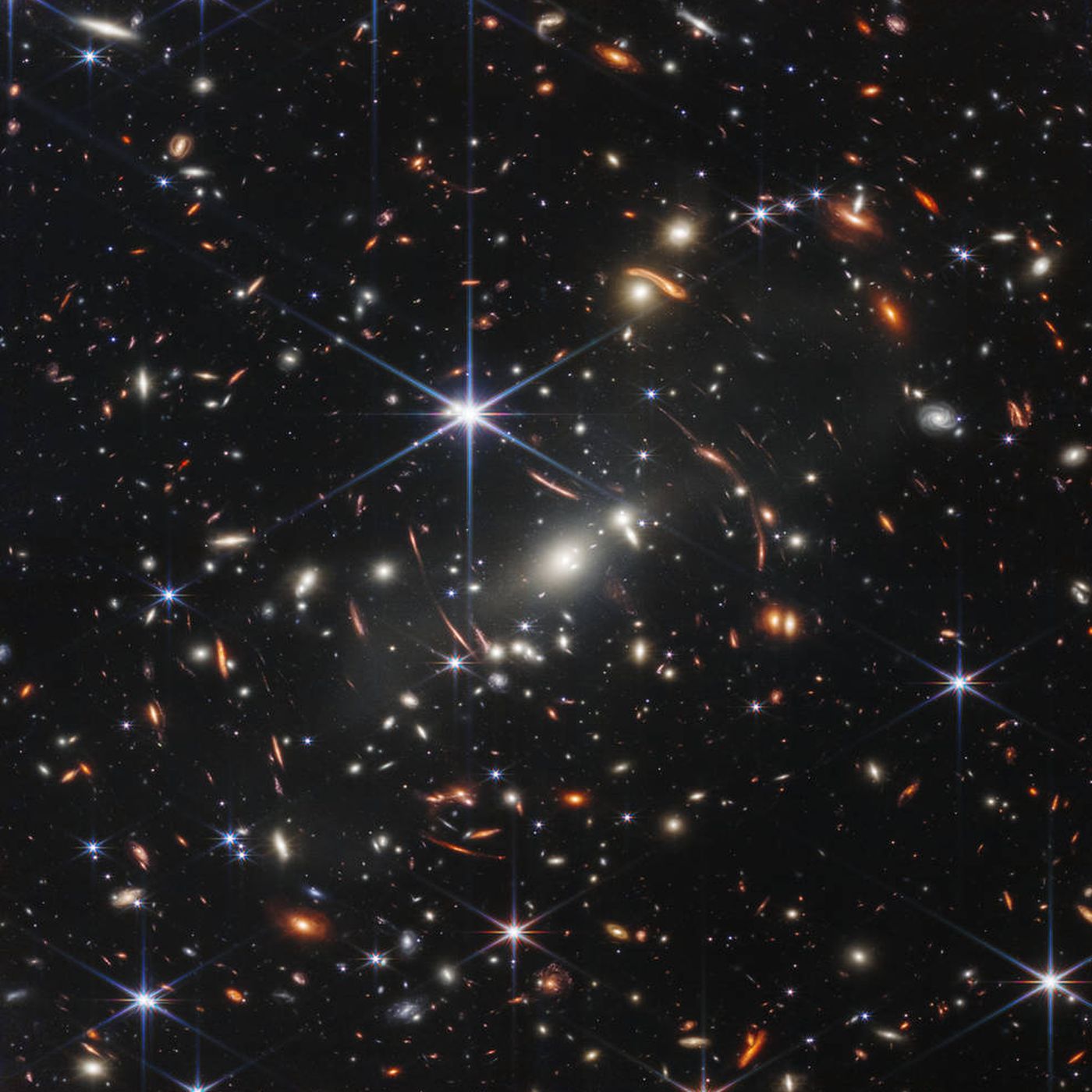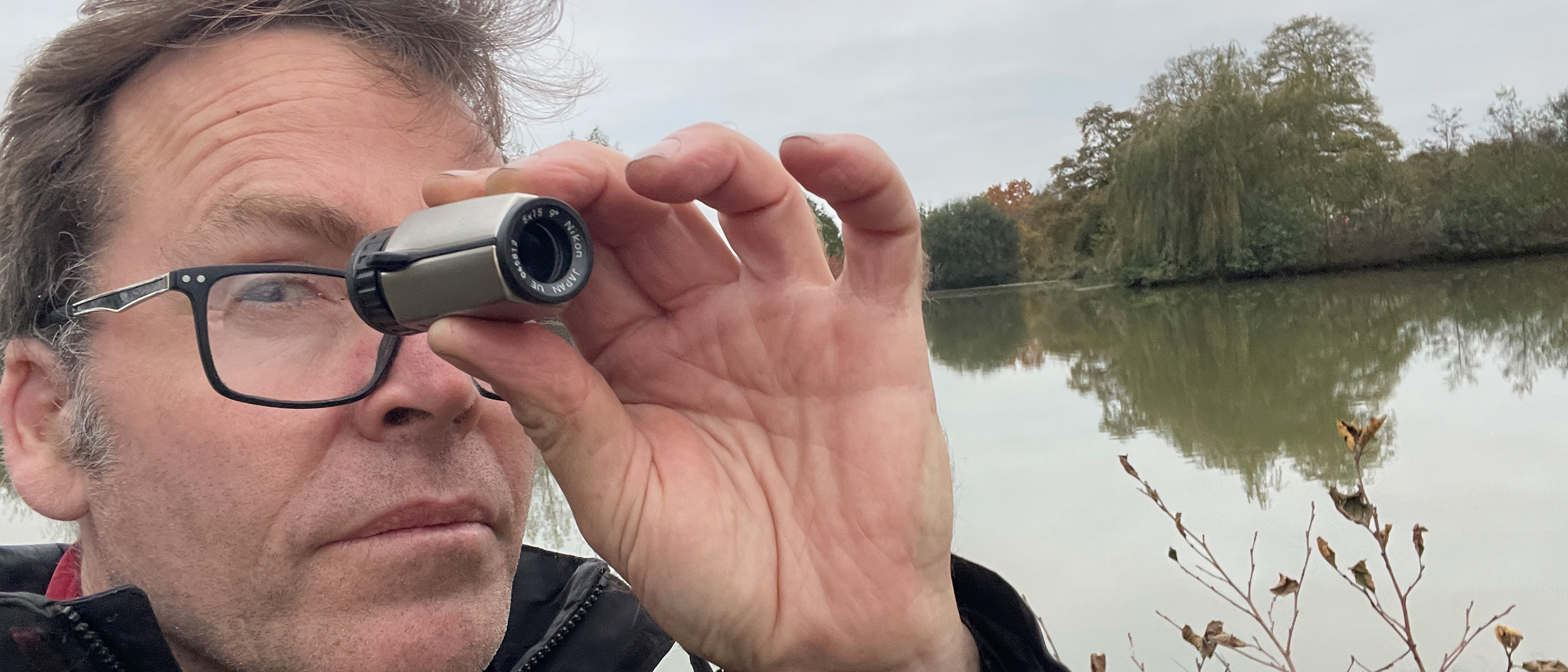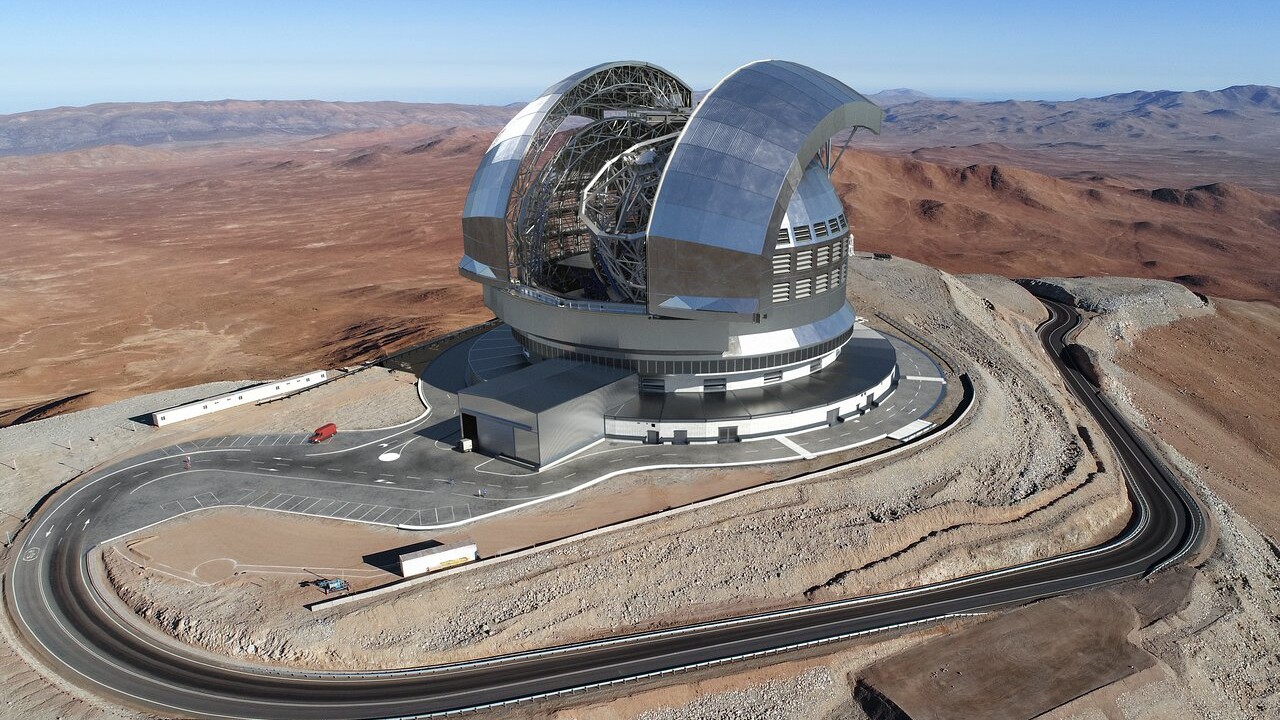Two roads diverge between a pair of quasars, and I’m sorry I can’t travel both — actually, wait, I can travel both.
I’m “standing” inside a cavernous galactic space in virtual reality, and with a few quick key strokes on my laptop, I can walk down the paths toward either quasar. At the centers of both, I find not supermassive black holes, but rather towering abstract paintings. And that’s because I’m not just inside any old virtual reality exhibit. I’m exploring VR artwork created by Ashley Zelinskie. Titled Twin Quasar, it’s located inside the Whitney Museum of American Art’s virtual landscape.
I’ll admit that I’m at first skeptical of any sort of virtual anything after the pandemic — I’ve taken enough virtual tours to last a lifetime. But Zelinskie’s work feels different. It solely exists virtually, designed specifically to exist within the confines of a machine. I’m just using a MacBook to view it, but I imagine it’d be pretty spectacular viewed through a VR headset.
Zelinskie was inspired by the iconic deep-space image from the James Webb Space Telescope that introduced an entirely new audience to gravitational lensing, a phenomenon in which the gravity of massive celestial objects bends the fabric of space-time around them and distorts the appearance of other objects in the vicinity because warps in spacetime affect the way light from a source travels. You can see gravitational lensing in action in this particular JWST image. “That got me thinking about … the warping of light and space,” Zelinskie, who has been collaborating with NASA’s JWST team and the European Space Agency scientist Tim Rawle for eight years, said in a video.
In Twin Quasar, the artist warps two paintings in the Whitney’s collection: László Moholy-Nagy’s Space Modulator (1938–40) and Rosalind Bengelsdorf Browne’s Compotier II (1938). She’s turned them into 3D models that you can “walk” beneath, observing how they change with your perspective. Behind them, hundreds if not thousands of galaxies are off in the distance, and I find it easy to get lost in thought while gazing at them.
One intriguing part of the work that I didn’t get to fully explore is its community aspect. It seems that multiple viewers can enter Twin Quasar at once, and you can see their avatars and even speak with them through text or voice chat. During the few times I entered the piece, I was the only one there. And while I loved the solitude in this environment, I’f love to experience it with others, too — just as you would an artwork in a physical museum.
To dive into Twin Quasar, you can enter the artwork here.

